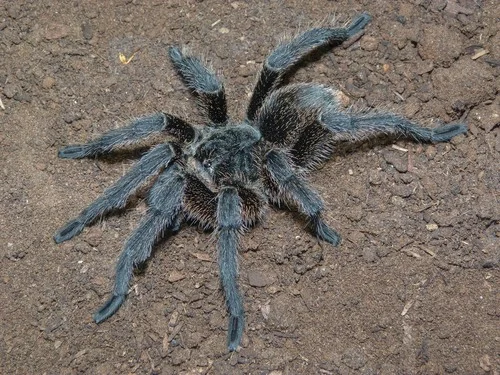Gut Microbiome of Grammostola pulchra: Symbiotic Bacteria in Digestion
Introduction: The Unseen Helpers
The concept of the gut microbiome – the vast community of bacteria, fungi, and other microbes living within the digestive tract – is well-studied in humans and vertebrates. However, research is increasingly revealing its importance in invertebrates, including tarantulas like *Grammostola pulchra*. These microorganisms are not just passive residents; they play active roles, particularly in digestion.
The Role of Gut Bacteria in Digestion
Tarantulas practice external digestion, injecting venom and digestive enzymes into their prey and then ingesting the liquefied meal. Despite this pre-processing, the ingested material still contains complex molecules that the tarantula’s own enzymes might struggle to break down efficiently. This is where symbiotic gut bacteria come in:
- Breaking Down Complex Molecules: Gut microbes possess enzymes capable of degrading substances like chitin (from insect exoskeletons) and complex proteins or lipids that might remain after initial digestion.
- Nutrient Synthesis: Some gut bacteria can synthesize essential vitamins or amino acids that the tarantula might not obtain sufficiently from its diet alone.
- Detoxification: Microbes might help neutralize potentially harmful compounds ingested with prey.
Maintaining good tarantula digestive system health likely involves a balanced gut microbiome.

A Symbiotic Relationship
The relationship between *G. pulchra* and its gut microbes is likely symbiotic, specifically mutualistic. The tarantula provides a stable, nutrient-rich environment (its gut), and the bacteria provide digestive assistance and potentially other benefits. This partnership enhances the tarantula’s ability to extract maximum nutrition from its meals.
The study of symbiosis in invertebrates is a growing field, revealing complex interactions across the animal kingdom.
Research Frontiers
The specific composition and function of the gut microbiome in *Grammostola pulchra* and other tarantulas are still areas of active research. Scientists are working to:
- Identify the dominant bacterial species present.
- Understand how the microbiome composition changes with diet, age, and environment.
- Determine the specific roles different bacteria play in digestion and overall health.
- Investigate how disruptions to the microbiome (e.g., due to stress or medication) might impact the tarantula.
Consideration: The use of antibiotics in tarantulas, while sometimes necessary, could potentially disrupt the beneficial gut flora, highlighting the need for careful veterinary guidance.
Implications for Tarantula Health
A healthy gut microbiome is likely crucial for efficient nutrient absorption, immune system function, and overall resilience in *G. pulchra*. Factors like diet diversity (feeding varied prey items) and maintaining appropriate environmental conditions (temperature, humidity) might indirectly support a balanced gut community. While we cannot directly manage a tarantula’s microbiome currently, providing optimal overall care is the best approach to support this unseen but vital aspect of their physiology.
Further Reading: Learn more about the general principles of Gut Microbiota on Wikipedia.